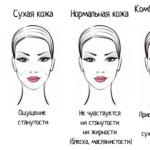Beautiful openwork napkin, where your favorite pineapples, roses and leaves are combined.
Diameter: 40 cm.
Materials: yarn "Iris" (100% cotton), 50 g white. 10 g pink, 10 g green, 5 g golden; hook N1.
Description of work
Base: yarn white dial a chain of 8 v. p. and close in a circle using the connection. Art. 1st r.: 3 c. lifting point. 11th century s/n into the resulting ring. Row finish connection. Art. 2nd r.: 5 c. p. (3 v. p. rise + 2 v. p.), * 1 tbsp. s/n in the next st. s/n of the previous row of og hook. 2nd century n. *, repeat from * to * 10 times, 12 arches in total. Row finish connection. Art. 3rd r.: 7 c. p. (1 v. p. rise + 6 v. p.). * 1st. b/n in the next article. s/n of the previous row from the hook, 6 in. n. *, repeat from * to * 10 times, 12 arches in total. Finish the row using conn. Art. Next, continue work according to the base diagram up to the 22nd row inclusive. Each row ends with a connection. Art.
Leaf (18 pcs.): Use a green thread to make a chain of 13th century. p. (12 v. p. base + 1 v. p.). 1st row: 1 tbsp. b/n in the 3rd century. p. chains from a hook, 9 tbsp. w/n in the next 9 centuries. chain base, 5 tbsp. b/n next c. p. base of chain from hook, 9 tbsp. w/n in the next 9 centuries. n. base of the chain. Continue working in straight and reverse rows according to the leaf pattern up to the 5th row inclusive. Connect the leaves together in 3 pieces. using a needle and thread. There are 6 shamrocks in total.
Rose gold rosette (6 pcs.): yarn Pink colour dial a chain of 46 v. p. (43 in the base p. + 3 in the lifting p.).
1st row: 1 tbsp. s/n in the 5th century. p. chains from a hook, 41 tbsp. s/n in the next 41 centuries. chain base
2nd century: I century. p. rise, 6 tbsp. s/n in the next st. s/n of the previous row from the hook, * 1 tbsp. b/n in the next article. s/n of the previous row from the hook. 6 tbsp. s/n in the next st. repeat s/n of the previous row from the hook from * to * 19 times. only 21 rapports. Row finish st. b/n. Cut the thread. Using golden-colored yarn, cast on a chain of 20 sts. p. (17 v. p. base + 3 v. p. lifting).
1st r.: I st. s/n and 5th century. n. chains from a hook. 15th century s/n in the next 15th century. n. base of the chain. 2nd century: I century. lifting point. 6 tbsp. s/n in the next st. s/n of the previous row from the hook, * I st. b/n in the next article. s/n of the previous row from the hook, 6 cr. s/n in the next st. repeat s/n of the previous row from the hook from * to * 6 times, 8 rapporgs in total. Row finish st. b/n.
Form a rose from the finished strips and secure on the wrong side using a needle and thread according to the photo.
Large rose (3 pcs.): Using pink yarn, cast on a chain of 60 sts. p. (57 v. p. base + 3 v. p. rise).
1st row: 1 tbsp. s/n in the 5th century. n. chains from a hook. 55 Art. s/n in the next 55 centuries. And. base of the chain. 2nd row: 1 c. lifting point. 6 tbsp. s/n in the next st. s/n of the previous row from the hook, 1 tbsp. b/n in the next article. s/n of the previous row from the hook, 6 tbsp. s/n in the next st. repeat s/n of the previous row from * to * 26 times, for a total of 28 repeats. Row finish st. b/n. Form a rose from the resulting strip and secure it on the wrong side with a needle and thread. Using green yarn, cast on a chain of 20 sts. p. (17 v. p. base + 3 v. p. lifting).
1st row: 1 tbsp. s/n in the 5th century. p. chains from a hook, 15 tbsp. s/n in the next 15th century. n. base of the chain.
2nd row: 1 c. lifting point. 6 tbsp. s/n in the next st. s/n of the previous row from the hook. * 1 tbsp. b/n in the next article. s/n of the previous row from the hook. 6 tbsp. s/n in the next st. s/n of the previous row from hook *, repeat from * to * 6 times. only 8 rapports. Row finish st. b/n. Sew a finished rose onto the resulting strip
In this way, make 2 pink and 1 golden roses. Starch the finished napkin, stretch it to size and leave until dry.
Sew ready-made motifs onto the base according to the diagram and photo.

Good afternoon dear friends!
Today I come to you with crocheted napkins. Despite the fact that we already have a real winter with snow everywhere, I have recently been interested in knitted flowers. About my new job, in which I used them, I’ll tell you next time.
In the meantime, I have amassed a small collection: beautiful napkins with crocheted flowers. Of course, there are many more beautiful napkins, but I chose those that I would like to knit myself. I can't decide which one to start with. What attracts me to them is their relative simplicity and the fact that they are somewhat unusual and original. Flower napkins combine charm and beauty.
I am sharing with you this selection of crocheted napkins with flowers and patterns.
Round openwork napkin with fillet flowers

The originality of the idea lies in the fact that the usual crocheting of napkins in the round is complemented by an insert with fillet roses. A very beautiful napkin, in my opinion.
The napkin turns out to be large, judging by the photo. I counted 72 rows in the diagram.

I think it would be better to knit it from bobbin sewing threads, then it would turn out delicate and thin. In this case, take a hook with a number no greater than 1.
Fillet napkin with voluminous crochet flowers

Napkin with three-dimensional crocheted elongated flowers

You can decorate any simple round napkin with similar voluminous flowers.
In this case, the pattern of the napkin is also interesting, with squares like this.

When knitting the last row of the napkin, flowers and leaves are attached to both sides; they must already be knitted in advance.
Thanks to this technique, the napkin takes on an elongated shape.
Beautiful napkin made of voluminous flowers

There’s just a whole meadow of flowers here! The napkin, of course, is not very simple compared to the previous ones, but very interesting. Although there is nothing particularly difficult about knitting.
You just need to tie a lot of flowers and connect them together correctly.
We collect the flowers in a napkin and crochet them in a circle according to the pattern.

Crochet napkin with crocheted roses

What attracted me to the napkin with roses was the roses themselves: they are knitted in a very simple pattern and always remind me of the roses we drew as children.
These are the ones I really love to knit. So I made a pillow with these roses. I have already provided the link above.

Napkin with flowers made of triangular motifs

A very simple version of a napkin, but original: from six triangular motifs with flat flowers in the center.
Crocheted basket with roses - master classDon't know how to crochet? No problem. There is a huge amount of educational information on the Internet. It is not difficult.
In the beginning, of course, having mastered only the basic techniques, you will not be able to knit a complex and voluminous thing. But, you will definitely learn, and with a little practice, you will create cute accessories for your home with your own hands.
For example, this elegant cover for a toaster in the shape of a basket with roses is very easy to knit.
True, you will have to work hard on a lot of flowers and leaves. But in this job you will hone your skills.
Later you can knit the same heating pad for a teapot or a lid for a bread box.
Crocheting is a very exciting craft.
Once you see how your work will transform the kitchen, you will want to knit something else...
To work you will need:
Yarn Brown for the basket;
Green yarn for leaves;
Red-pink-yellow yarn for roses.
Operating procedure:
1. First, measure the item for which you will knit this “clothes”.
2. We will knit the basket with a “checkerboard” pattern, where the alternation of flat and convex columns forms a texture reminiscent of basket weaving (see photo). 
A “flat stitch” is a double crochet, the hook is threaded from right to left in front of the leg of the previous row.
A “convex post” is also a double crochet, but the hook is threaded from right to left behind the leg of the post of the previous row.
3. Using red, pink and yellow yarn, we knit roses according to the pattern (see photo).
To do this, we cast on a chain in which the number of loops must be a multiple of 4 and for lifting, cast on 3 more loops.
We fold the connected “paths” into roses. 
4. Using green yarn, we knit leaves according to the pattern (see photo above).
5. We fix the finished flowers and leaves on the “basket”.
Crocheted napkins have long ceased to be an attribute from grandma's chest and are actively used in interior design, for example, in the Provencal style that is popular these days. Even a novice needlewoman can master knitting napkins, since a variety of techniques allows you to choose the work that you can do. With just a few simple knitting techniques, you can create original decoration with your own hands. Those who have long mastered crocheting can make more complex, fabulously beautiful napkins using patterns or descriptions from numerous magazines.
The most common forms of knitted napkins
Crochet napkins come in different shapes:
- round;
- oval;
- radiate;
- square;
- rectangular;
- diamond-shaped
The knitting method depends on the shape of the future napkin.
Round napkin
We start knitting from the middle. We connect the air loops into a chain. In each subsequent row, you need to make uniform increases, forming a pattern of circular rows.

Oval napkin
We start knitting from the central chain of air loops. All subsequent rows are knitted around this chain on both sides. Knitting occurs in circular rows, but increases should only be made on the rounded sides on both sides.

Radial napkin
As with knitting a round napkin, we start from the middle. We connect the air loops into a chain. We expand the canvas in circular rows, making increases in the same place.

The principle of knitting round, oval and radial napkins is not much different. You can often see needlewomen knitting napkins from the same pattern different forms, making this a variety of kits.
Square napkin
A square napkin should be knitted, like a radial one, starting from the middle. To expand the circular rows, increases are made in four places, which will become the corners of the square.

Rectangular napkin
Knitting rectangular napkins combines techniques for making square and oval.
We knit a central chain of chain stitches. All subsequent rows are knitted around it on both sides. Increases must be made on four sides (at the corners of the rectangle). But if in a square napkin the increases were made at the same distance, then in a rectangular napkin they are added at the beginning and end of the central chain, thus forming two corners on each side.

Diamond napkin
The diamond-shaped napkin should start from a chain of air loops. Further expansion of the canvas follows the example of a round or radial shape. After knitting several rows, you should make decreases on two opposite sides of the napkin, while continuing to knit the other two sides.

Sometimes, to give a napkin the required shape, it is knitted not in a circle, but starting from one side, as, for example, napkins made with fillet crochet. In this way, you can achieve not only a square or rectangular shape, but also any other.




You can crochet a napkin using a detailed description or diagram. The schemes are image of the future product, made using special icons. Symbols are attached to each diagram.

- Start reading the pattern, just like knitting, need from the middle- from the central chain. Sometimes the number of air loops in it can be counted, or it is indicated by a number.
- The beginning of each row is indicated by a number - the number of this row. After the number there must be lifting loops.
- Sometimes the diagram indicates arrow direction of knitting.
- If the icons are connected to each other at the bottom, knit them needed from one point(air loop, column or arch of the bottom row).
- The icons connected to each other in the diagram at the top indicate that they have there must be a common vertex.
- Each next row should have more loops than the previous one.
It is easier for beginning needlewomen to use a verbal description of the pattern.
Video about how to disassemble and understand circuits crochet napkins with detailed descriptions.
Crochet patterns for napkins using various techniques
Crochet is distinguished by a variety of techniques and ways of making the fabric. Some of them are very simple and accessible even to beginners, as they use the simplest techniques: single crochet, double crochet and chain stitches. Others are the "aerobatics" of crochet, but if available detailed diagrams or descriptions can also be mastered.
The following techniques are used for knitting napkins:
- fillet knitting;
- openwork knitting;
- Irish lace;
- modular knitting using motifs;
- Bruges lace;
- Romanian (cord) lace.

Simple crochet patterns for napkins
Professionally written pattern descriptions use generally accepted universal abbreviations for brevity.
Cast on 12 air loops (v.p.) and connect them into a circle.
- 1st row: Perform 3 lifting loops (instead of the first double crochet), then knit 31 double crochets under the ring (st. s/n) and finish with a connecting loop in the third ch. rise.
- 2nd row: Perform 3 lifting loops then 3 tbsp. s/n, one in each st. s/n bottom row; 3 ch, *4 st. s/n in the next columns of the bottom row, ch 3** repeat rapport *-** 6 more times, finish with a connecting loop in the third lifting loop.
- 3rd row: Perform 3 lifting loops then 5 tbsp. s/n (first in the lifting loops of the bottom row, one in each st. s/n of the bottom row and one in the ch of the bottom row); 4 ch, *6 st. s/n in the last ch, the next columns of the bottom row and the first ch, 4 ch** repeat rapport 6 times, finish with a connecting loop.
- 4th row: Perform 3 lifting loops then 7 tbsp. s/n (first in the lifting loops of the bottom row, one in each st. s/n of the bottom row and one in the ch of the bottom row); 5 ch, *8 st. s/n in the last ch, the next columns of the bottom row and the first ch, 5 ch** repeat the rapport 6 more times, ending with a connecting loop.
- 5 row: Perform 3 lifting loops then 9 sts. s/n (first in the lifting loops of the bottom row, one in each st. s/n of the bottom row and one in the ch of the bottom row); 10 ch, * 10 st. s/n in the last ch, the next columns of the bottom row and the first ch, 10 ch** repeat the rapport 6 more times, ending with a connecting loop.
- 6th row: Perform 3 lifting loops then 3 tbsp. s/n, one in each st. s/n of the bottom row 10 vp, skip 2 treble s/n of the bottom row, 4 treble s/n in the next 4 columns of the bottom row; 11 ch, *4 st. s/n, 10 vp, 4 treble s/n, 11 vp** repeat rapport 6 more times, ending with a connecting loop.
- 7th row:* 5 vp, 15 treble s/n under the arch from vp. bottom row, 5 vp, half-column in the sixth vp. next arch from ch.** Repeat rapport 7 more times. Finish with a connecting loop.
- 8th row:*6 vp, 1 tbsp. s/n, picot repeat 8 times (in each odd column of the bottom row), 6 vp, half-column in half-column of the bottom row**. Repeat the rapport 7 more times. Finish with a connecting loop.
Here is a diagram of this napkin:

Here are some more simple diagrams:



Napkins made using the fillet crochet technique have patterns that contain the simplest knitting techniques: double crochets and chain stitches.



























Video tutorials on crocheting napkins
Filet napkin with roses
Oval napkin “Larch”
A simple openwork crocheted napkin. The lesson consists of two parts. The needlewoman explains how you can increase the size of the napkin if there is such a need.
(lesson continuation)
Napkin “Sun”
This original napkin, thanks to its voluminous elements, can serve as a table decoration or a stand for a plate.
Caring for knitted napkins
All handmade products require proper care. After knitting, the finished napkin is smoothed and steamed to give it the required shape. If you wish, you can lightly starch the product
The topic of knitting napkins is very broad and multifaceted. It is impossible to describe everything in one article. If you are interested in the above ideas, please leave your comments. Advice from experienced craftsmen will be especially valuable for readers.





